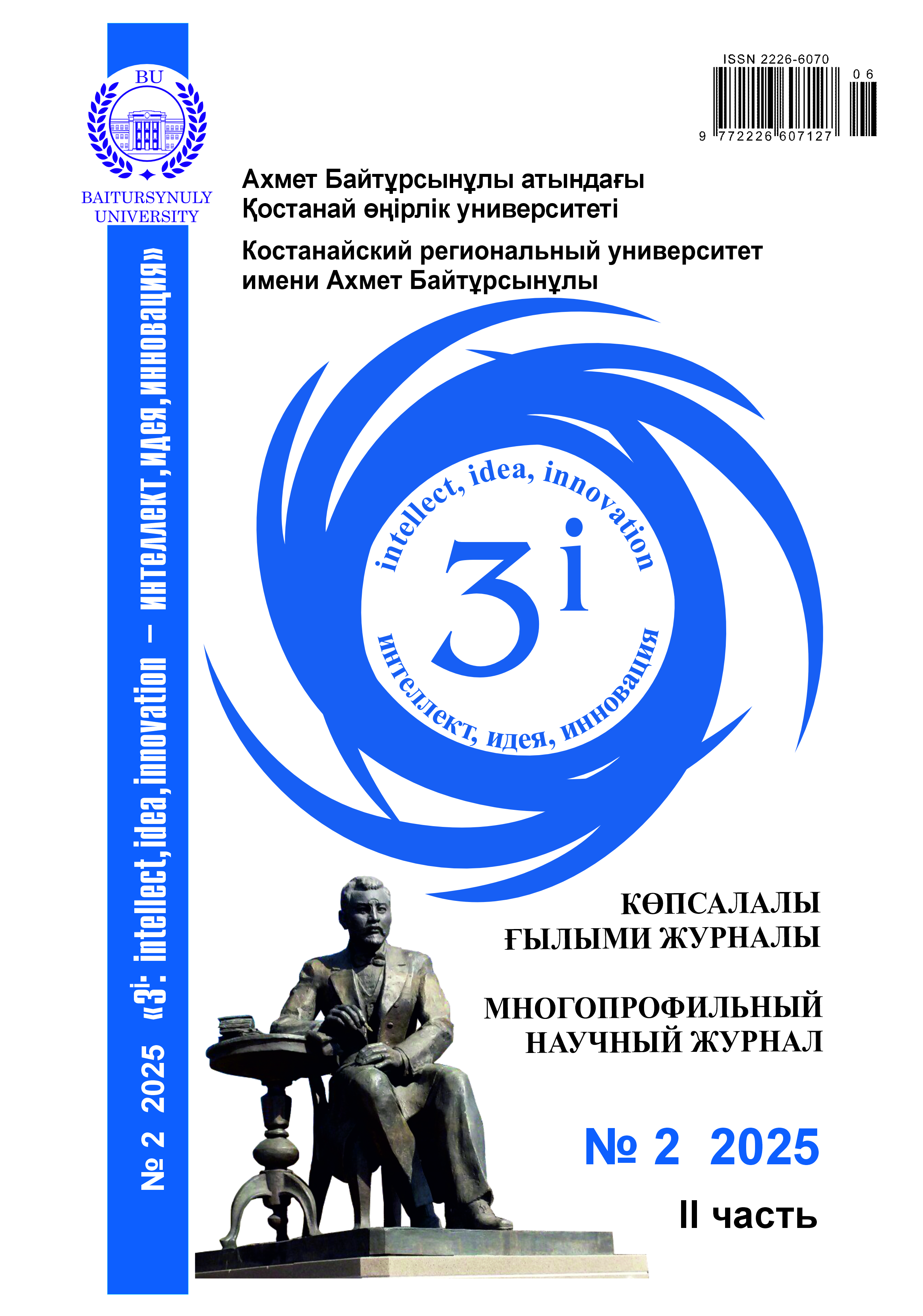СОМАТИКАЛЫҚ ЛЕКСИКАНЫ ОҚЫТУДА ҚОЛДАНЫЛАТЫН ӘДІС-ТӘСІЛДЕР
DOI:
https://doi.org/10.52269/RWEP2522268Кілт сөздер:
соматикалық лексика, лексиканы оқыту, танымдық бағытта оқыту, антропоөзектік бағытта оқыту, соматикалық лексиканы танымдық бағытта оқытуАңдатпа
Мақалада қазақ тіліндегі соматикалық лексиканы оқыту барысында қолданылатын әдіс-тәсілдер қарастырылады. Сонымен қатар соматикалық лексиканың қазақ халқының дүниетанымындағы маңызы сөз етіледі. Зерттеу барысында отандық және шетелдік ғалымдардың тілді танымдық тұрғыдан оқытуға арналған ғылыми-әдістемелік еңбектері сараланды. Атап айтқанда, қазақ тіл білімінің көрнекті өкілдері А.Байтұрсынұлы мен Қ.Жұбанов еңбектеріндегі тіл мен таным сабақтастығына қатысты көтерілген мәселелерге назар аударылды. Соматикалық лексикаға байланысты А.Нұржанова мен С.Сәтенованың теориялық тұжырымдары талданды. Қазақ тілінің соматикалық лексикасын оқытуда қолданылатын әдіс-тәсілдерді құрастыру барысында қазақ тіл білімі мен әдістемесінде қалыптасқан таным теориясына және танымдық бағыттағы зерттеулерге сүйену орынды деп табылды. Мақалада соматикалық лексиканы жан-жақты (танымдық, прагматикалық, функционалдық және т.б.) тиімді оқытуға арналған тапсырмалар жүйесі ұсынылады. Қазақ тілін оқыту барысында білім алушыға тек грамматикалық білім берумен шектелмей, сонымен қатар халықтың мәдениеті мен дүниетанымын танытатын, оны өзге халықтардан даралап тұратын «тілдік бейнені» меңгертуге ерекше мән беріледі. Адам қоршаған әлемді өзіне жақын, таныс ұғымдар арқылы, яғни дене мүшелеріне қатысты атаулардың ауыспалы мағынада қолданылуы арқылы танып-біледі. Студенттер осы сөздердің ауыспалы мағынада қолданылуын зерттеу арқылы қазақ халқының құндылықтар жүйесін, назар аударатын рухани-мәдени тұстарын тереңірек түсіне бастайды. Бұл – тілді тек қарым-қатынас пен ойды жеткізу құралы ғана емес, сонымен қатар ұрпақтан ұрпаққа білім мен тәжірибе тасымалдайтын мәдени-танымдық құрал ретінде қарастыру қажеттігін көрсетеді.




